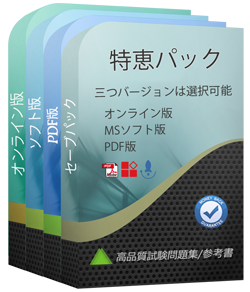NCA-GENM試験認定を取られるメリット
ほとんどの企業では従業員が専門試験の認定資格を取得する必要があるため、NCA-GENM試験の認定資格がどれほど重要であるかわかります。テストに合格すれば、昇進のチャンスとより高い給料を得ることができます。あなたのプロフェッショナルな能力が権威によって認められると、それはあなたが急速に発展している情報技術に優れていることを意味し、上司や大学から注目を受けます。より明るい未来とより良い生活のために私たちの信頼性の高いNCA-GENM最新試験問題集を選択しましょう。
NVIDIA Generative AI Multimodal試験学習資料での高い復習効率
ほとんどの候補者にとって、特にオフィスワーカー、NCA-GENM試験の準備は、多くの時間とエネルギーを必要とする難しい作業です。だから、適切なNCA-GENM試験資料を選択することは、NCA-GENM試験にうまく合格するのに重要です。高い正確率があるNCA-GENM有効学習資料によって、候補者はNVIDIA Generative AI Multimodal試験のキーポイントを捉え、試験の内容を熟知します。あなたは約2日の時間をかけて我々のNCA-GENM試験学習資料を練習し、NCA-GENM試験に簡単でパスします。
NCA-GENM試験学習資料を開発する専業チーム
私たちはNCA-GENM試験認定分野でよく知られる会社として、プロのチームにNVIDIA Generative AI Multimodal試験復習問題の研究と開発に専念する多くの専門家があります。したがって、我々のNVIDIA-Certified Associate試験学習資料がNCA-GENM試験の一流復習資料であることを保証することができます。私たちは、NVIDIA-Certified Associate NCA-GENM試験サンプル問題の研究に約10年間集中して、候補者がNCA-GENM試験に合格するという目標を決して変更しません。私たちのNCA-GENM試験学習資料の質は、NVIDIA専門家の努力によって保証されています。それで、あなたは弊社を信じて、我々のNVIDIA Generative AI Multimodal最新テスト問題集を選んでいます。
無料デモをごダウンロードいただけます
様々な復習資料が市場に出ていることから、多くの候補者は、どの資料が適切かを知りません。この状況を考慮に入れて、私たちはNVIDIA NCA-GENMの無料ダウンロードデモを候補者に提供します。弊社のウェブサイトにアクセスしてNVIDIA Generative AI Multimodalデモをダウンロードするだけで、NCA-GENM試験復習問題を購入するかどうかを判断するのに役立ちます。多数の新旧の顧客の訪問が当社の能力を証明しています。私たちのNCA-GENM試験の学習教材は、私たちの市場におけるファーストクラスのものであり、あなたにとっても良い選択だと確信しています。
Tech4Examはどんな学習資料を提供していますか?
現代技術は人々の生活と働きの仕方を革新します(NCA-GENM試験学習資料)。 広く普及しているオンラインシステムとプラットフォームは最近の現象となり、IT業界は最も見通しがある業界(NCA-GENM試験認定)となっています。 企業や機関では、候補者に優れた教育の背景が必要であるという事実にもかかわらず、プロフェッショナル認定のようなその他の要件があります。それを考慮すると、適切なNVIDIA NVIDIA Generative AI Multimodal試験認定は候補者が高給と昇進を得られるのを助けます。
NVIDIA Generative AI Multimodal 認定 NCA-GENM 試験問題:
1. Which of the following techniques are MOST relevant to optimizing the energy efficiency of a large multimodal generative A1 model deployed on NVIDIA GPUs? (Select TWO)
A) Adding more data augmentation techniques to the training process.
B) Increasing the size of the hidden layers in the transformer architecture.
C) Knowledge distillation, transferring the knowledge to a smaller model.
D) Implementing model parallelism across multiple GPUs without optimizing communication overhead.
E) Using mixed precision training (e.g., FP16) to reduce memory usage and computation.
2. You are building a system that uses text and images to generate 3D models. The text describes the object, and the images provide visual details. During training, you observe that the model heavily relies on the image input and largely ignores the text description. What technique can you employ to encourage the model to give more weight to the textual input?
A) Apply a higher dropout rate to the image embedding layer.
B) Decrease the learning rate for the image processing branch of the model.
C) Use a curriculum learning approach, starting with simpler text descriptions and gradually increasing the complexity.
D) Increase the resolution of the input images.
E) Increase the size of the text vocabulary.
3. A research team is developing a multimodal model to predict stock prices using financial news articles, company filings (text), historical stock prices (time-series), and executive interviews (audio). They are experiencing significant performance issues due to inconsistent data quality across modalities. What specific strategies would you recommend to address these data quality challenges?
A) Implement audio transcription and sentiment analysis on executive interviews to extract key information and emotional tone.
B) Normalize and scale historical stock prices to a consistent range to avoid dominance by high-magnitude values.
C) All of the above.
D) Focus exclusively on improving the quality of the most readily available data source.
E) Apply Named Entity Recognition (NER) to financial news and company filings to standardize company names and financial terms.
4. Consider the following code snippet which aims to create a custom prompt for a Stable Diffusion model using the 'diffusers* library. The goal is to generate an image of 'a cat wearing a hat sitting on a chair'. Which of the following modifications would MOST effectively improve the quality and coherence of the generated image?
A) Using a smaller image resolution to reduce computational cost.
B) Removing the word 'sitting' from the prompt to make it more general.
C) Increasing the 'guidance_scale' and adding a negative prompt such as 'blurry, distorted'.
D) Decreasing the number of inference steps to speed up the generation process.
E) Adding more unrelated keywords to the prompt to increase diversity.
5. You are fine-tuning a pre-trained multimodal model for a new task. You have limited computational resources. Which of the following fine-tuning strategies would be the MOST computationally efficient while still achieving good performance?
A) Randomize the model to train, if it improves the training rate.
B) Freeze all layers except the classification head and fine-tune only the classification head.
C) Freeze the lower layers of the model and fine-tune the upper layers and the classification head.
D) Fine-tune all the layers of the model.
E) Train a new random model from scratch for the task, which will avoid the need to load the pre-trained model.
質問と回答:
| 質問 # 1 正解: C、E | 質問 # 2 正解: A、C | 質問 # 3 正解: C | 質問 # 4 正解: C | 質問 # 5 正解: C |


 弊社は製品に自信を持っており、面倒な製品を提供していません。
弊社は製品に自信を持っており、面倒な製品を提供していません。


 Akino
Akino


